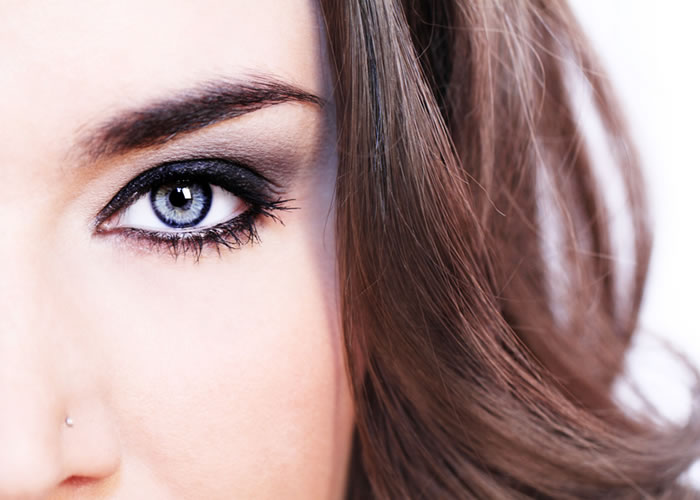Facial surgery – for a balanced facial profile

Upper Eyelid Corrections (Blepharoplasty)
Skin laxity of the upper eyelids let the eyes appear smaller, tired and old. Chronic irritations by constant skin-skin contact at the lid or visual field restrictions by redundant skin are further indications for an upper eyelid correction (blepharoplasty).
Traditionally, redundant skin is excised in a way the very fine scar is located in a natural skin fold of the upper eyelid. Accompanying protruding fat and sloppy lid muscles may be partially removed or gently tightened as well through this incision. Upper eyelid blepharoplasty is always an outpatient procedure under local anesthesia and typically does not take longer than 1 hour.
The procedure has a low risk for complications and is one of the most common plastic surgical procedures. Sutures are removed after 5 days, 7 days later camouflage makeup can be applied and you can get back into social life.
For an optimal result, the eye, eyelid and brow position have to be analyzed exactly, as a lowered eyebrow (brow ptosis) can deteriorate or mimic an upper eyelid skin laxity. In severe cases, brow repositioning procedures must be added for an optimal result of a youthful periorbital region.
Upper eyelid blepharoplasties are frequently combined with lower eyelid corrections, removal of festoons or bags of prolapsed fat under the eyes to improve the overall appearance of the eye region.
Lower eyelid corrections
Lower eyelid blepharoplasties encompass a wide range of several different methods to create a youthful, relaxed and fresh eyelid-eye-cheek region. Traditionally, tear troughs, prolapsed fat (fat „bags“) festoons and wrinkly skin of the lower lid are corrected. The range of methods may blend into a lifting procedure of the midface.
Simple lower lid corrections can easily be performed under local anesthesia with some sedation. More extensive procedures with wider preparation and skeletal soft tissue support techniques are better performed under brief general anesthesia. Sometimes, one overnight stay is recommended, as rest, cooling and elevated body position are very important after lower eyelid blepharoplasties. Many “problems” can be addressed through an invisible incision at the inside of the lower lid (transconjunctival approach). Skin resections are performed by a subciliary incision, leaving the scar mostly covered by the eyelashes of the lower lid, whereas the short lateral extension is hidden in natural skin creases. When performed carefully and with detailed dissection, lower eyelid corrections can have an excellent effect on the overall appearance of the face.
Lower blepharoplasties can be combined very well with upper eyelid corrections (see there) to improve the overall periorbital region.
